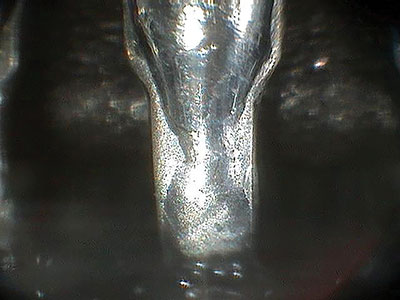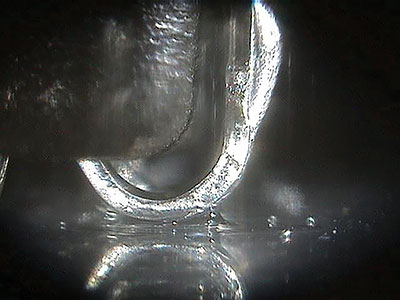Solderability Testing Using Simulation

A simple in-process test for determining component wettability.
This month we illustrate solderability testing using simulation. This is basically conducting simple on-the-shop-floor solderability testing to decide whether to use old components. I use paste printed onto glass slides using the paste and stencil from production. I use the same reflow profile for the board design and components in question.
These J-leaded component terminations wet successfully with the solder paste deposits on the glass plate. The paste has reflowed up, wetting the termination on the front face of the lead (FIGURE 1). However, look at the edge and the corners of the leads. If the solder paste has not added to the original tin plating, it calls into question the coating and component age. We have recently used this test to look at the compatibility of low-temperature solders on different terminations as well.


Figure 1. J-leaded component showing solder wicking up the lead (left) and at the bottom termination (right).
This simple in-process test can be used at high and low temperatures to illustrate wetting and is far better than dip-and-look but not as good as wetting balance measurements, which are quantifiable and the industry standard.
We have presented live process defect clinics at exhibitions all over the world. Many of our Defect of the Month videos are available online at youtube.com/user/mrbobwillis.
is a process engineering consultant; bob@bobwillis.co.uk. His column appears monthly.
Press Releases
- 2026 IEEE Electronic Components and Technology Conference Student Innovation Challenge Pre-registration Deadline Extended to January 11, 2026
- PCBsync PCB Assembly Introduces Full-Scale Electronic Manufacturing Service
- Magic Leap Partners with Pegatron for AR Glasses Components Production
- TEXMAC/Takaya Appoints ARK Mfg. as New Rep in Arizona







